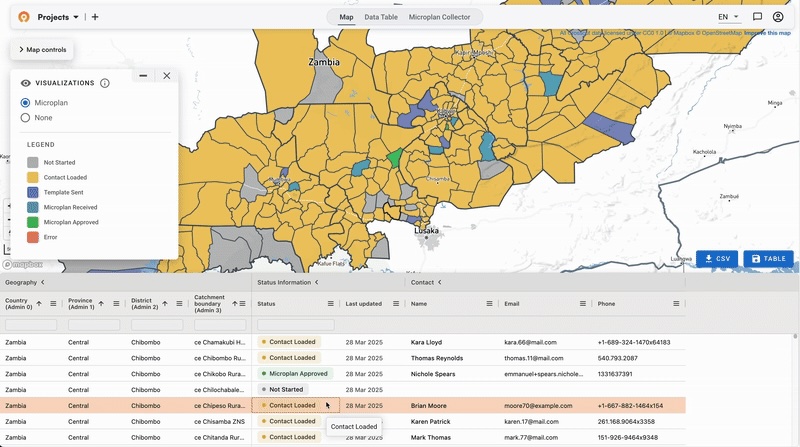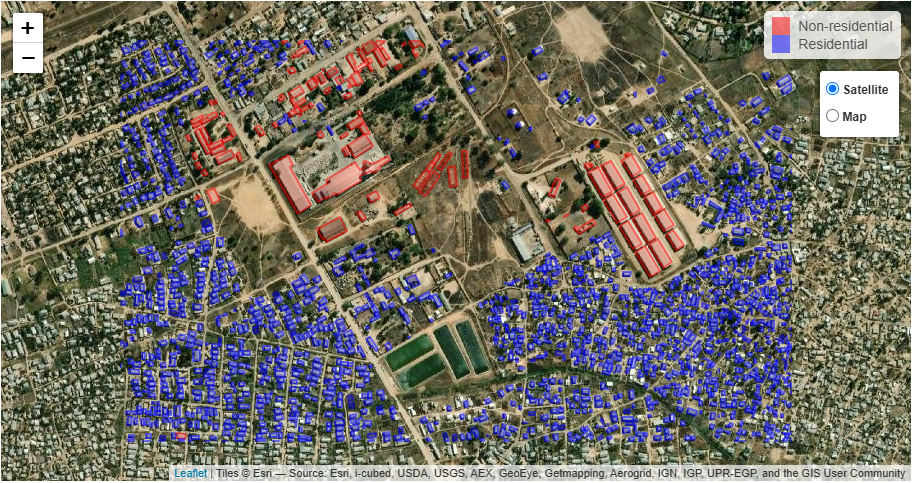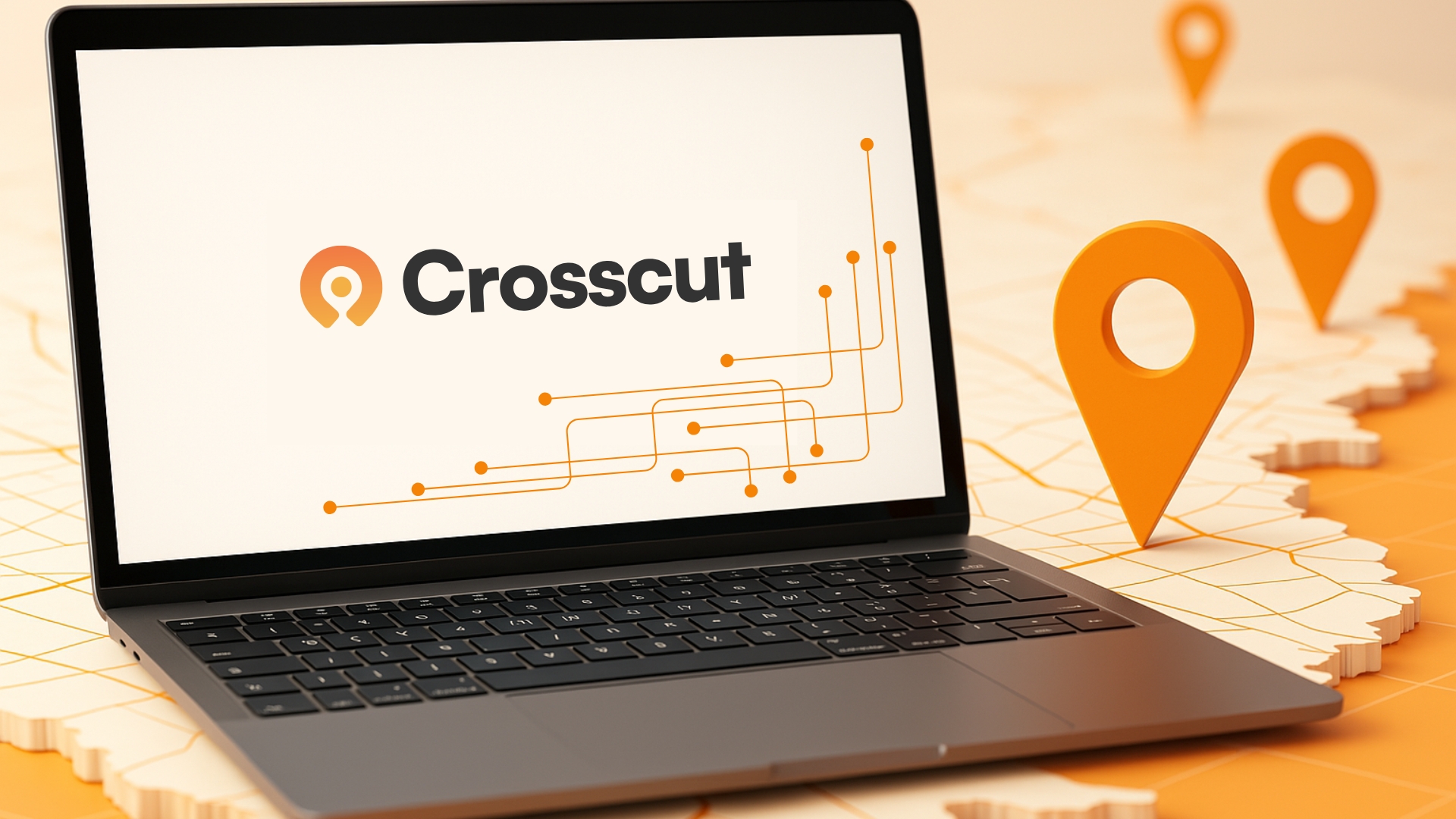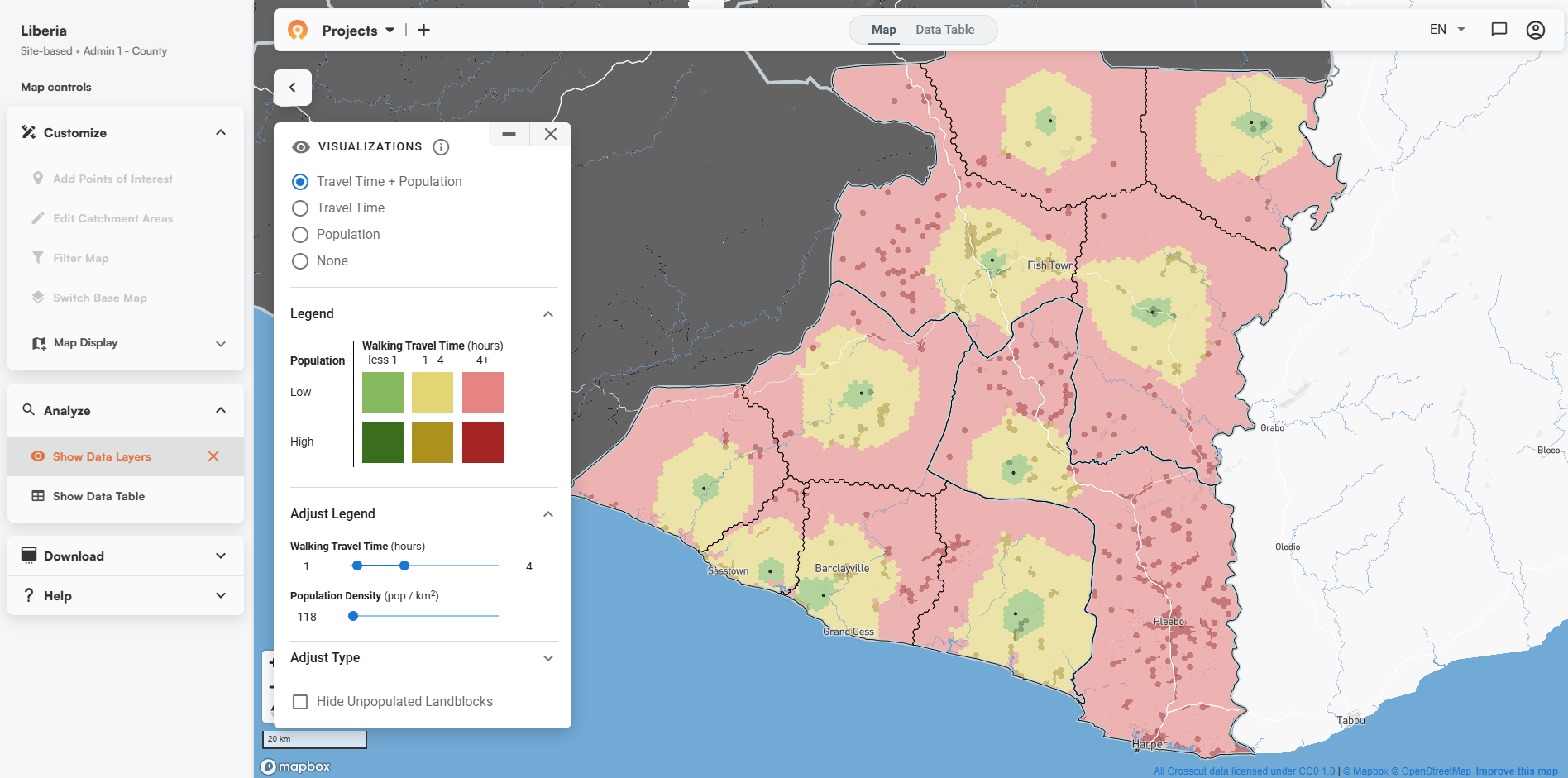Microplanning with Email and Excel

Field data collection often means drowning in email attachments, conflicting spreadsheets, and missing responses. It’s a challenge that plagues organizations across nations and industries but hits especially hard in global health, where accurate population counts can be a matter of life and death.
Last week, I wrote about how our heat maps visualize accessibility and make it easier for organizations to understand who can access their services. Today, I'm excited to introduce another powerful feature we've just added to the Crosscut App: the Microplan Collector.
This highly requested new tool organizes and centralizes the messiness of field data collection. Rather than introducing yet another mobile app requiring devices, training, funding, IT ecosystem alignment, cumbersome approvals, and more, the Microplan Collector shoulders much of the administrative heavy lifting of basic field data collection without disrupting the email and Excel workflows your teams already use.
The Denominator Problem: Why Population Counts Matter
Without knowing how many people live in an area, how can you determine if you've reached 80% vaccination coverage? How do you know how many bed nets you need to protect a population from malaria? How do you know the disease prevalence percentage of a local population? Public health planners call this "the denominator problem," and it's a persistent challenge in resource planning. These are the types of problems we help solve at Crosscut.
Across other industries, organizations might ask:
- How can retailers estimate market size without knowing local customer numbers?
- How can logistics companies allocate delivery resources without accurate volume forecasts from each hub?
- How do education districts allocate resources without estimates on the number of students across schools?
Traditional approaches to answering these questions involve complex, top-down population modeling. Yet the World Health Organization has shown that the most accurate data usually comes from local staff who know their own regions best. Having reliable data is critical, but it is frequently missing.
Microplanning: The Grassroots Data Collection Solution
Microplanning addresses the denominator problem through a grassroots approach. Beyond just data collection, microplanning is an end-to-end planning process that happens at the local level rather than from headquarters. Instead of relying solely on high-level estimates, microplanning leverages detailed, location-specific information from field staff who know their communities best.
However, time and again, we've heard from health ministries, NGOs, and other organizations about how much they struggle with this data-gathering phase of microplanning. It’s a costly challenge that can drag on for weeks of emails, phone calls, and meetings.
The Crosscut app makes it easy to manage this process with features like our new Microplan Collector. We built this to smooth over the choppy workflow while making it easier to analyze key information for more accurate planning and better resource allocation. Whether you’re mapping out health services, retail markets, or product forecasts, this new tool can help.

The Reality Gap: Why Excel and Email Still Rule
Based on recent surveys we conducted across malaria, immunization, and neglected tropical disease across more than 30 countries, we've confirmed a not-so-surprising reality that many of you know well: despite all the sophisticated digital tools available today, over 90% of microplanning still happens through Excel spreadsheets being emailed back and forth!
The process typically looks something like this:
- Health campaign planners email templates to district supervisors.
- District supervisors collect population data for the communities in their catchment areas and then email their forms back.
- These planners then manually compile the data across hundreds of spreadsheets as they try to stay on top of the status of everyone submitting their documents.
- Planners and district health workers gather to review estimates, benchmark against other population estimates, and land on a “final number.”
- After weeks of back-and-forth, an estimate emerges that is often better than just using a dated census figure.
This approach works but has clear limitations: emails bounce, templates get lost, versions conflict, and tracking who has responded becomes an administrative nightmare. Yet it persists because it's familiar and requires minimal training for field staff who might only conduct microplanning once or twice a year.
Meeting Users Where They Are
Rather than trying to replace this familiar workflow with yet another app requiring new logins and training, we took a different approach. Tools like email and Excel are already available on most devices without needing additional software.
The Microplan Collector is designed as an on-ramp to digital microplanning. It works with the tools people already know (Excel and email) while centralizing and standardizing the data for the campaign managers.

How It Works: Simple but Powerful
Let’s walk through how easily the Microplan Collector helps turn disorganized email exchanges into structured data collection:
- Campaign setup: The planner creates a microplanning project in the Crosscut App
- Template management: They upload their existing Excel microplanning template or use our standard one that aligns with AMP guidance and WHO NTD guidance.
- Contacts import: The video below shows how easy it is to import a list of district contacts who will complete the microplan for the communities in their area.
- Automated distribution: The Microplan Collector then emails templates to all contacts with a click.
- Status tracking: As responses come back, the system automatically tracks who has responded and flags any errors or missing data.
- Data centralization: All returned data is automatically compiled in the system.

A huge benefit is that your existing workflows don’t change. Field staff continue doing exactly what they've always done, filling out Excel templates and emailing them back. You can even keep using the same Excel files. But for the central team, the data is now automatically organized, validated, and ready for analysis.
From Email to Insight in a Few Clicks
Once the data is collected, the Microplan Collector extracts submissions automatically and connects directly with the mapping capabilities of the Crosscut App. Population estimates from the field can be:
- Triangulated against satellite-derived estimates for validation
- Visualized on heat maps to identify coverage gaps and accessibility challenges
- Used to calculate resource needs for interventions such as supplies and resources needed for health campaigns
- Exported to other systems like DHIS2 for broader health information management
That last point is particularly important. The population data collected through this process can actually improve the quality of data in national health information systems through our integration with DHIS2, making this a win beyond just the immediate campaign planning.
Use Cases Beyond Public Health
Data collection happens in all shapes and sizes. The Microplan Collector streamlines what has traditionally been a time-consuming process. By centralizing template distribution and response tracking, teams can focus on analysis rather than administrative overhead.
While we developed this tool with public health microplanning in mind, its applications extend much further:
- Retail chains collecting sales forecasts from individual stores
- Logistics companies gathering delivery estimates from regional hubs
- Educational institutions collecting enrollment data from satellite campuses
- Government agencies gathering field reports from multiple districts
Whether you're planning malaria prevention or retail market sizing, the core challenge stays the same: efficiently gathering accurate field data without disrupting existing workflows.
Stress Less: Digitizing Your Data Collection
The Microplan Collector represents a new, more practical approach to data collection. Rather than demanding that organizations leap directly into fully digital workflows, the Microplan Collector is an on-ramp that meets organizations where they are today while building a bridge to more sophisticated approaches.
The benefits are clear:
- Reduced time, effort, and cost to collect, validate, and finalize microplans
- Increased population accuracy estimates through more rigorous analysis
- No training required for field staff who continue using familiar email and Excel
- Centralized tracking of all responses in one dashboard
- Automatic aggregation of hundreds or thousands of Excel templates
- Immediate visibility into who has and hasn't responded
- Seamless integration with mapping and analysis tools
- DHIS2 compatibility allows you to add data to global health information systems
Once you start with the Microplan Collector, you can explore the Crosscut App's full suite of free tools. This includes the accessibility heat maps I mentioned at the top and population benchmarking, all available within the same platform.
Try It Today
The Microplan Collector is available now as part of the Crosscut App, free to use for public and private organizations worldwide. If you're managing any kind of field data collection process, I'd love to hear how this approach might help streamline your workflows.
Learn more about our Advisory Services or reach out directly to explore how the Microplan Collector could work for your organization.
Related Posts

Loamin x Crosscut: Modernizing Malaria Prevention with Geospatial Maps

How AI Is Impacting Our Work



.JPG)
